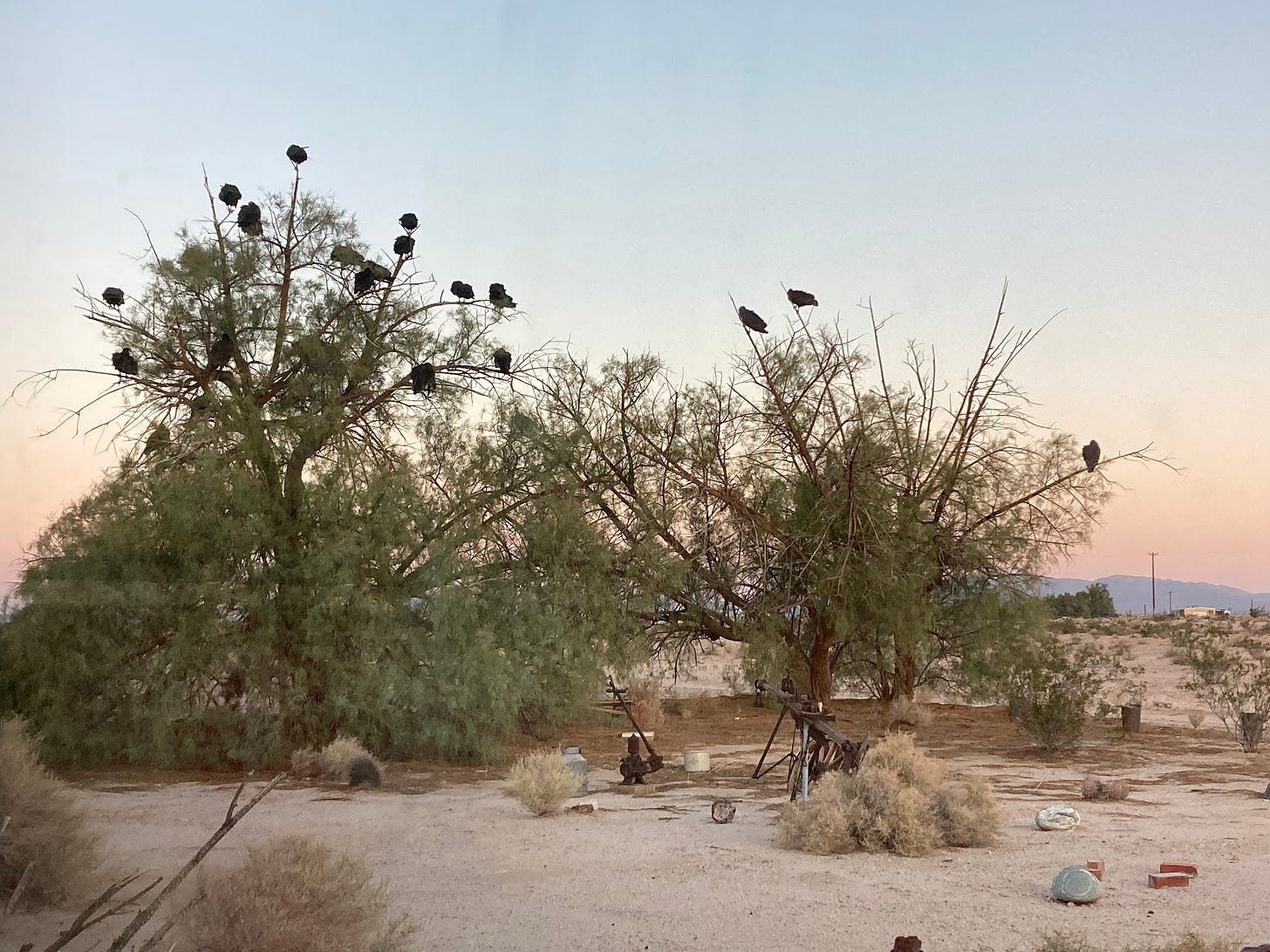Wildlife Wednesday: Sky Gliders
Looking ahead to our spectacular turkey vulture migration—fall is almost on its way!

I keep looking for signs of fall. These include spotting Orion, a winter constellation in the northern hemisphere, while watching the Perseid meteor shower from the driveway, and the recent lovely run of cooler days made me wonder where my favorite sweater is.
Late one recent afternoon at Barker Dam in Joshua National Park, I watched a dozen turkey vultures gather around the rock formations, gliding in lazy circles. Were these local vultures hanging out and enjoying some late in the day thermals? Or was this the leading edge of the fall migration of these big birds?
I’m jumping the gun a bit—it’s warmed up again, and it is still officially summer for a few more weeks. And according to BirdCast, a bird migration dashboard, the fall migration has barely started, and vultures are not yet among the hundreds of thousands of birds starting to cross our skies, mostly at night. (This dashboard is insanely awesome, and you’ve got to take a look.)
According to my notes and others’ observations, vultures usually start coming through in big groups the third week in September. I want you to keep an eye out for them because if you haven’t seen a kettle of 50 or more turkey vultures spiraling past, you are in for a treat.
This vortex of vultures moves lazily but purposefully along the ridges of the little San Bernardino Mountains and very close to Highway 62. If you look closely, you’ll see that some migrating hawks join them. For a few weeks in September and October, turkey vultures are going to Central America and perhaps as far away as Ecuador.
Turkey vultures smell better than almost any other animal (although they don’t smell good—they projectile vomit when they are alarmed and pee on their legs to cool off). They can detect just a few parts per trillion of dead animal smells. Ken Stager, who worked at the Natural History Museum in LA, showed that vultures have such a keen sense of smell that oil companies added a gas (ethyl mercaptan) that smells like dead animals and looked for circling vultures to track leaks in their pipelines.
Turkey vultures roost in local trees for the evening as they migrate and are often seen hanging out in the California fan palms at the Oasis of Mara. Their gliding flight is very efficient, and they seldom stop for a snack—but sometimes they can’t resist a dead animal that has gotten good and rotten. One afternoon I watched a half dozen gathered around a dead jackrabbit1; it was the kind of windy day that sends your lawn chairs into the neighbors’ yard, and the turkey vultures were having trouble taking flight. It made me laugh as they tumbled claws over beaks a few feet off the ground. Finally, in a calm moment, they were able to take off.
Turkey vultures and other migrating birds will be here soon. Keep watching the skies!
Leave your thoughts in the comments below. Please note that we do not allow anonymous comments. Please be sure your first and last name is on your profile prior to commenting. Anonymous comments will be deleted.
Feel free to share this article!
Many communities in the Morongo Basin are economically disadvantaged, so our coverage will always be free. However, if you have the means to support our work, we always appreciate upgrades to a paid subscription. Your upgrade helps keep subscriptions free for those who cannot afford to donate.
Note that donations in excess of $100 are tax deductible to the extent allowed by law, and your subscription/donation will be listed as AHA Projects, the name of our fiscal receiver, on your statement. Donations over $100 can be made via the Aha Paypal.
In case you are worried that turkey vultures might be a vector for spreading rabbit hemorrhagic virus, their stomach acid is extremely acidic and it neutralizes most viruses—and allows them to digest almost anything.




Nice piece, Kat!
My FAVE desert bird!! I love watching them float and glide! I cannot wait to photograph them as they migrate this fall! I always know it's fall when I see them in large groups overhead!